Business Environment Analysis: Types, Size, Scope, and Structures
VerifiedAdded on 2023/03/30
|11
|690
|134
Report
AI Summary
This report provides an analysis of the business environment, focusing on different types of organizations including public, private, and voluntary sectors, and their respective legal structures. It explains the size and scope of various organizations, highlighting their objectives, funding sources, and employee benefits. The report also discusses different market entry strategies such as franchising, joint ventures, and licensing, comparing their registration requirements, training needs, and degree of control. The conclusion emphasizes the importance of understanding these factors for business success. Desklib offers a variety of resources, including solved assignments and past papers, to aid students in their studies.

BUSINESS
ENVIRONMENT
ENVIRONMENT
Paraphrase This Document
Need a fresh take? Get an instant paraphrase of this document with our AI Paraphraser
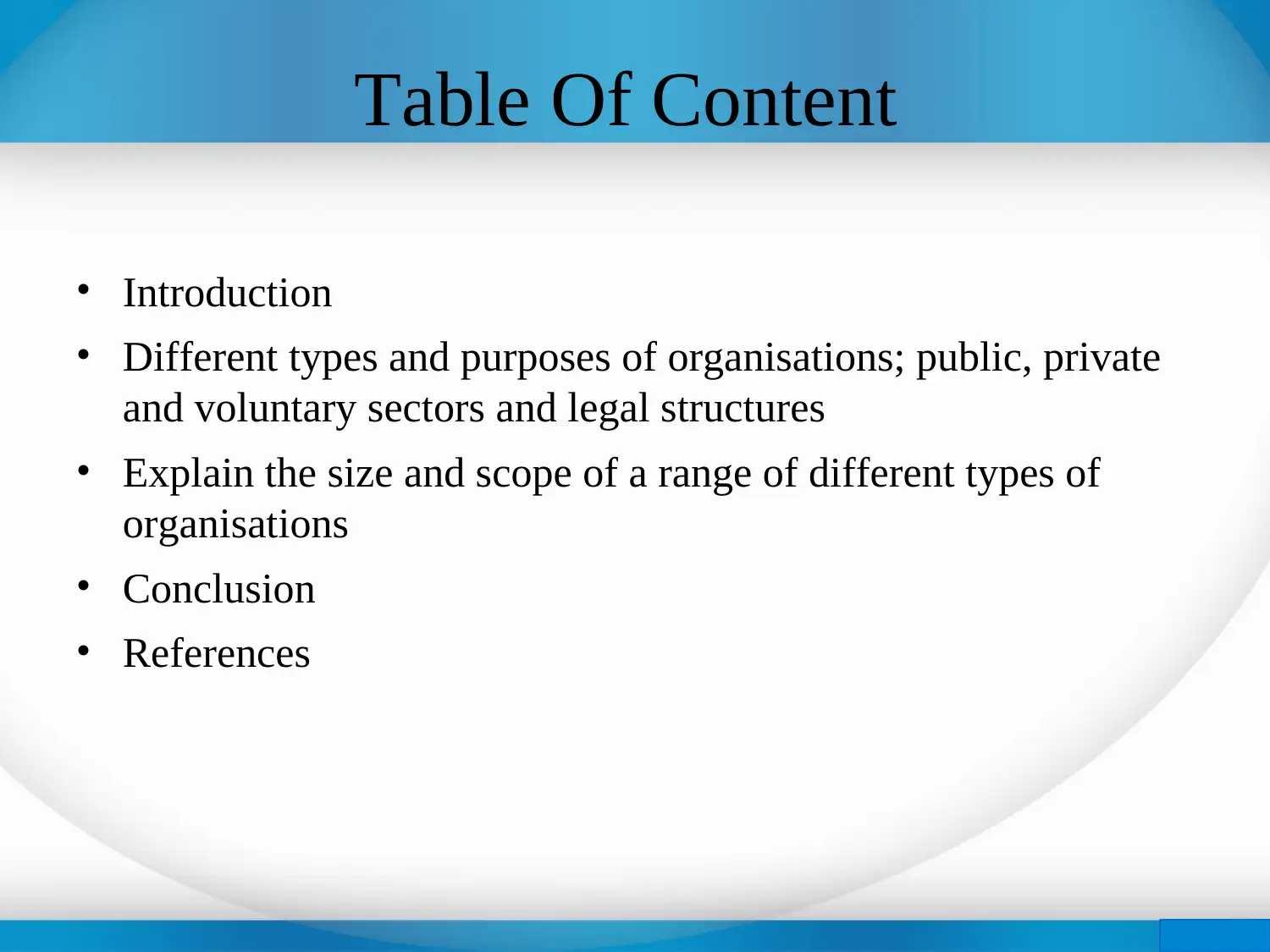
Table Of Content
• Introduction
• Different types and purposes of organisations; public, private
and voluntary sectors and legal structures
• Explain the size and scope of a range of different types of
organisations
• Conclusion
• References
• Introduction
• Different types and purposes of organisations; public, private
and voluntary sectors and legal structures
• Explain the size and scope of a range of different types of
organisations
• Conclusion
• References
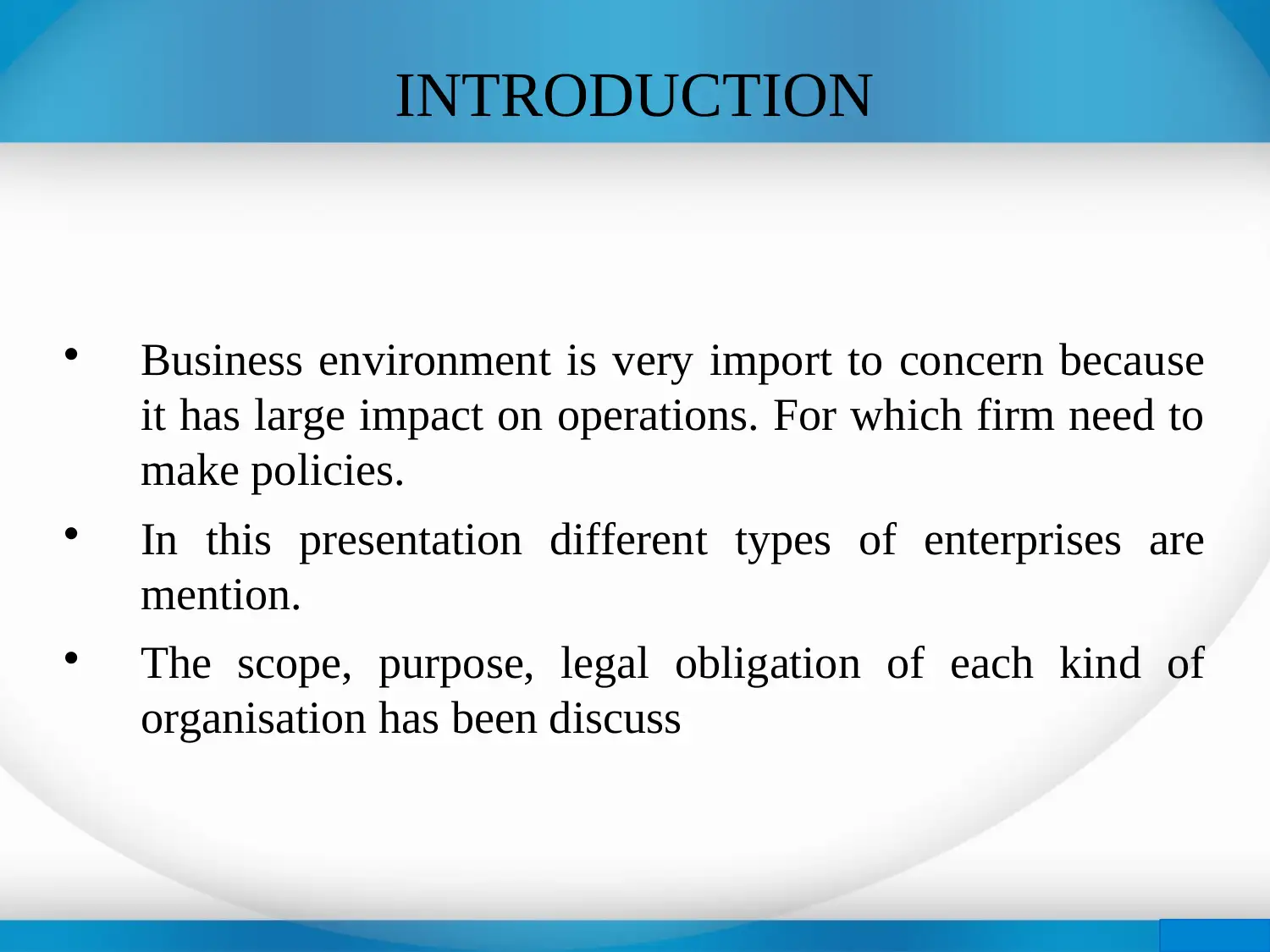
INTRODUCTION
Business environment is very import to concern because
it has large impact on operations. For which firm need to
make policies.
In this presentation different types of enterprises are
mention.
The scope, purpose, legal obligation of each kind of
organisation has been discuss
Business environment is very import to concern because
it has large impact on operations. For which firm need to
make policies.
In this presentation different types of enterprises are
mention.
The scope, purpose, legal obligation of each kind of
organisation has been discuss
⊘ This is a preview!⊘
Do you want full access?
Subscribe today to unlock all pages.

Trusted by 1+ million students worldwide
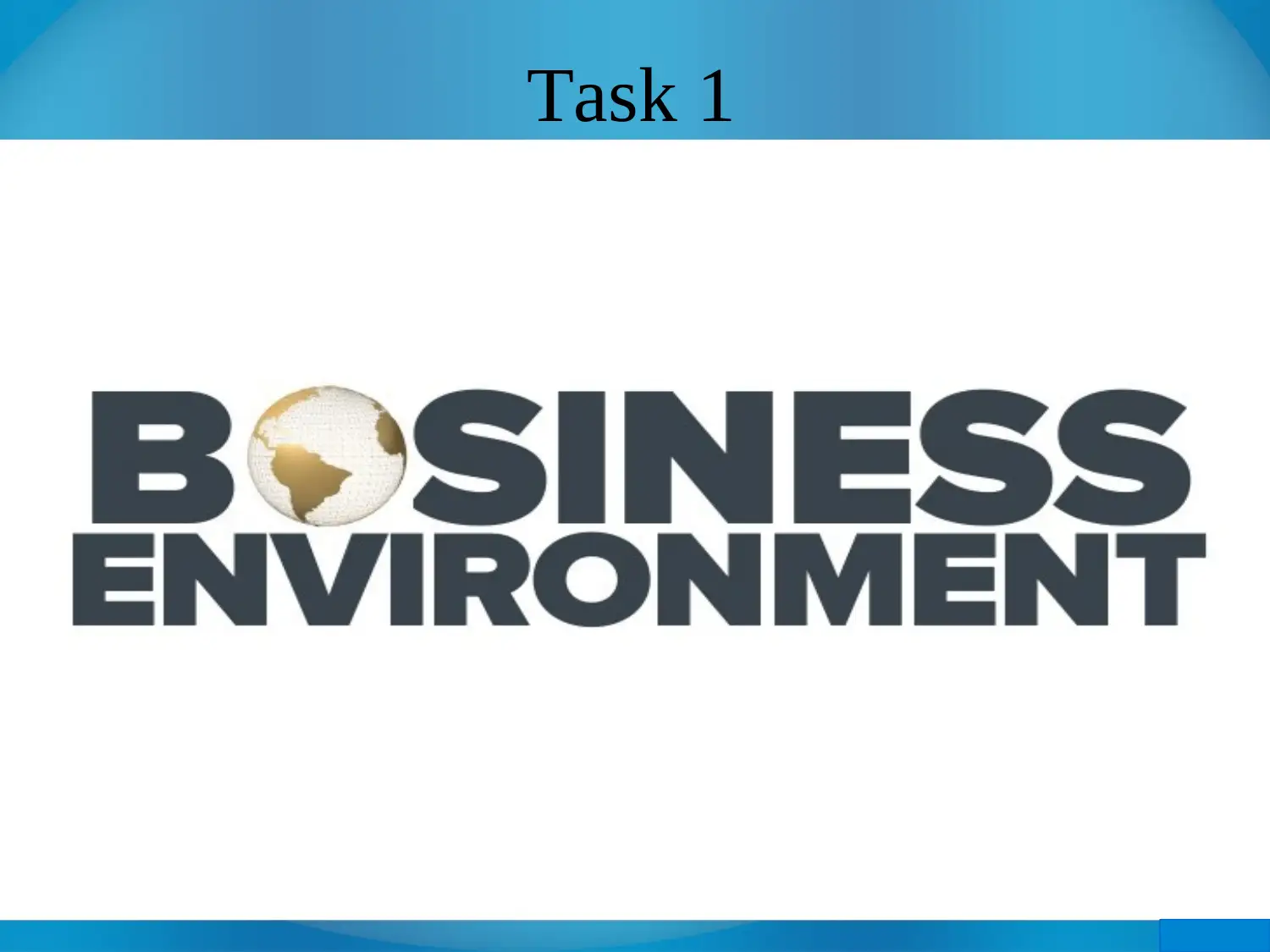
Task 1
Paraphrase This Document
Need a fresh take? Get an instant paraphrase of this document with our AI Paraphraser
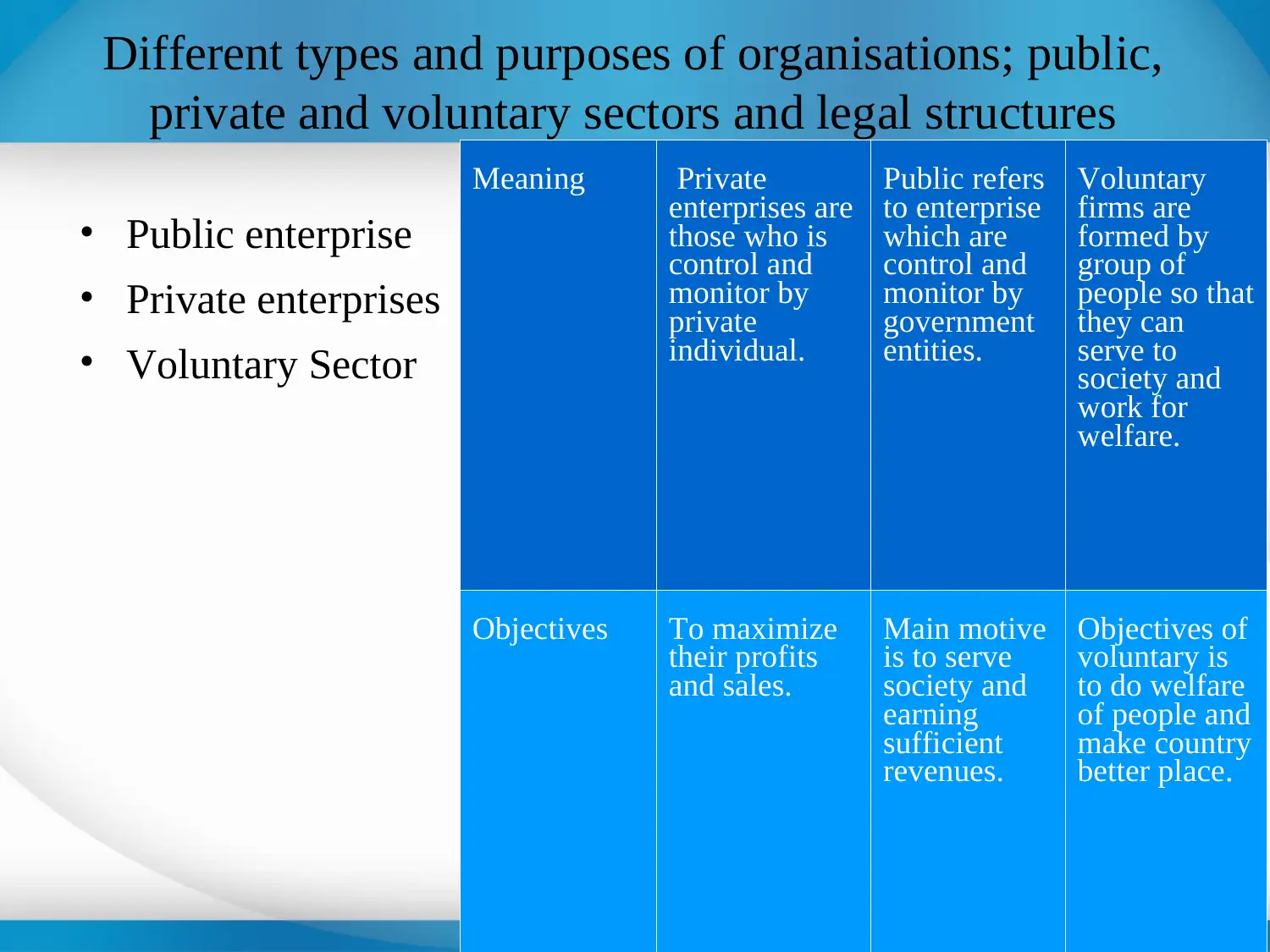
Different types and purposes of organisations; public,
private and voluntary sectors and legal structures
• Public enterprise
• Private enterprises
• Voluntary Sector
Meaning Private
enterprises are
those who is
control and
monitor by
private
individual.
Public refers
to enterprise
which are
control and
monitor by
government
entities.
Voluntary
firms are
formed by
group of
people so that
they can
serve to
society and
work for
welfare.
Objectives To maximize
their profits
and sales.
Main motive
is to serve
society and
earning
sufficient
revenues.
Objectives of
voluntary is
to do welfare
of people and
make country
better place.
private and voluntary sectors and legal structures
• Public enterprise
• Private enterprises
• Voluntary Sector
Meaning Private
enterprises are
those who is
control and
monitor by
private
individual.
Public refers
to enterprise
which are
control and
monitor by
government
entities.
Voluntary
firms are
formed by
group of
people so that
they can
serve to
society and
work for
welfare.
Objectives To maximize
their profits
and sales.
Main motive
is to serve
society and
earning
sufficient
revenues.
Objectives of
voluntary is
to do welfare
of people and
make country
better place.
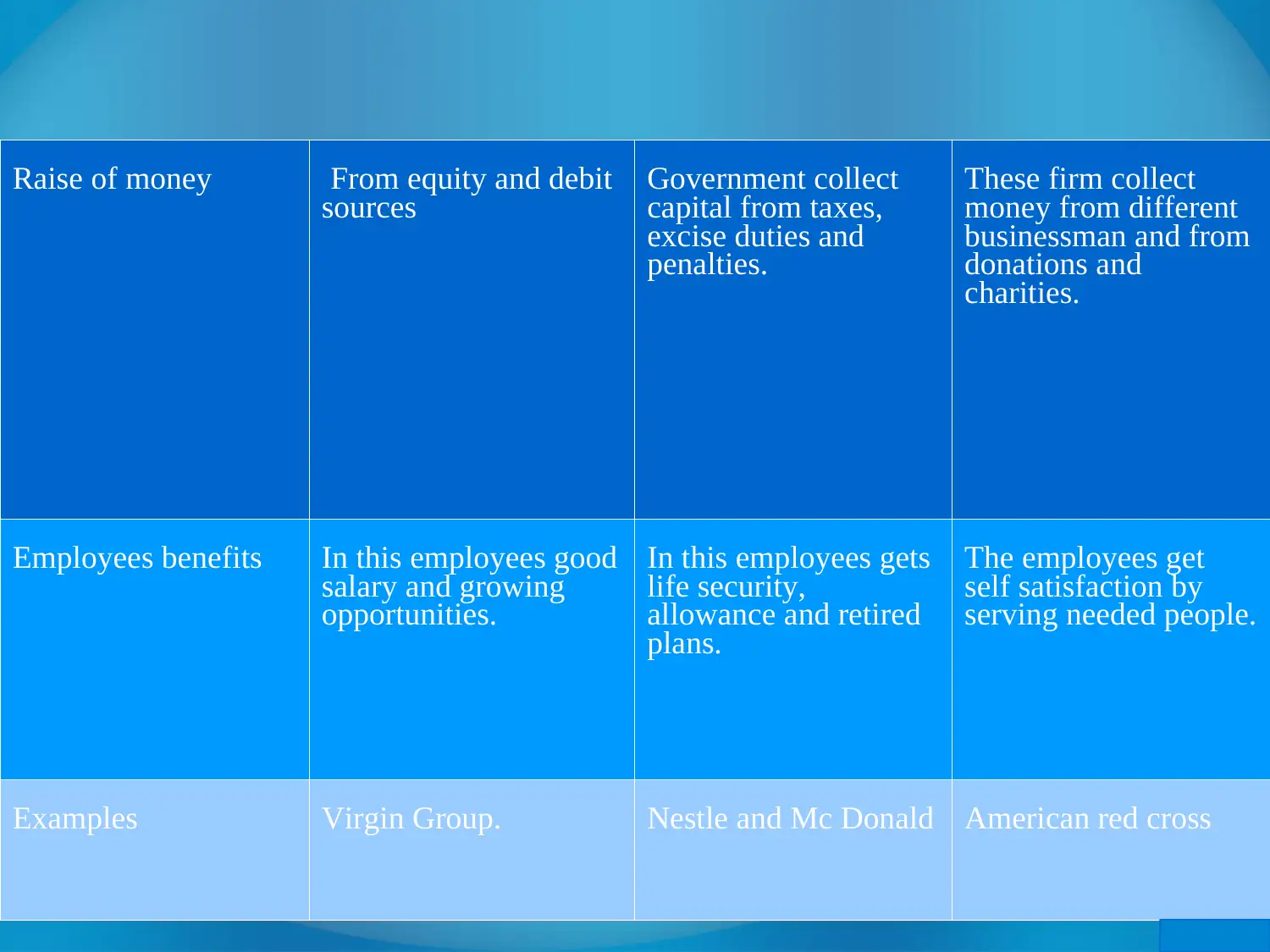
Raise of money From equity and debit
sources Government collect
capital from taxes,
excise duties and
penalties.
These firm collect
money from different
businessman and from
donations and
charities.
Employees benefits In this employees good
salary and growing
opportunities.
In this employees gets
life security,
allowance and retired
plans.
The employees get
self satisfaction by
serving needed people.
Examples Virgin Group. Nestle and Mc Donald American red cross
sources Government collect
capital from taxes,
excise duties and
penalties.
These firm collect
money from different
businessman and from
donations and
charities.
Employees benefits In this employees good
salary and growing
opportunities.
In this employees gets
life security,
allowance and retired
plans.
The employees get
self satisfaction by
serving needed people.
Examples Virgin Group. Nestle and Mc Donald American red cross
⊘ This is a preview!⊘
Do you want full access?
Subscribe today to unlock all pages.

Trusted by 1+ million students worldwide
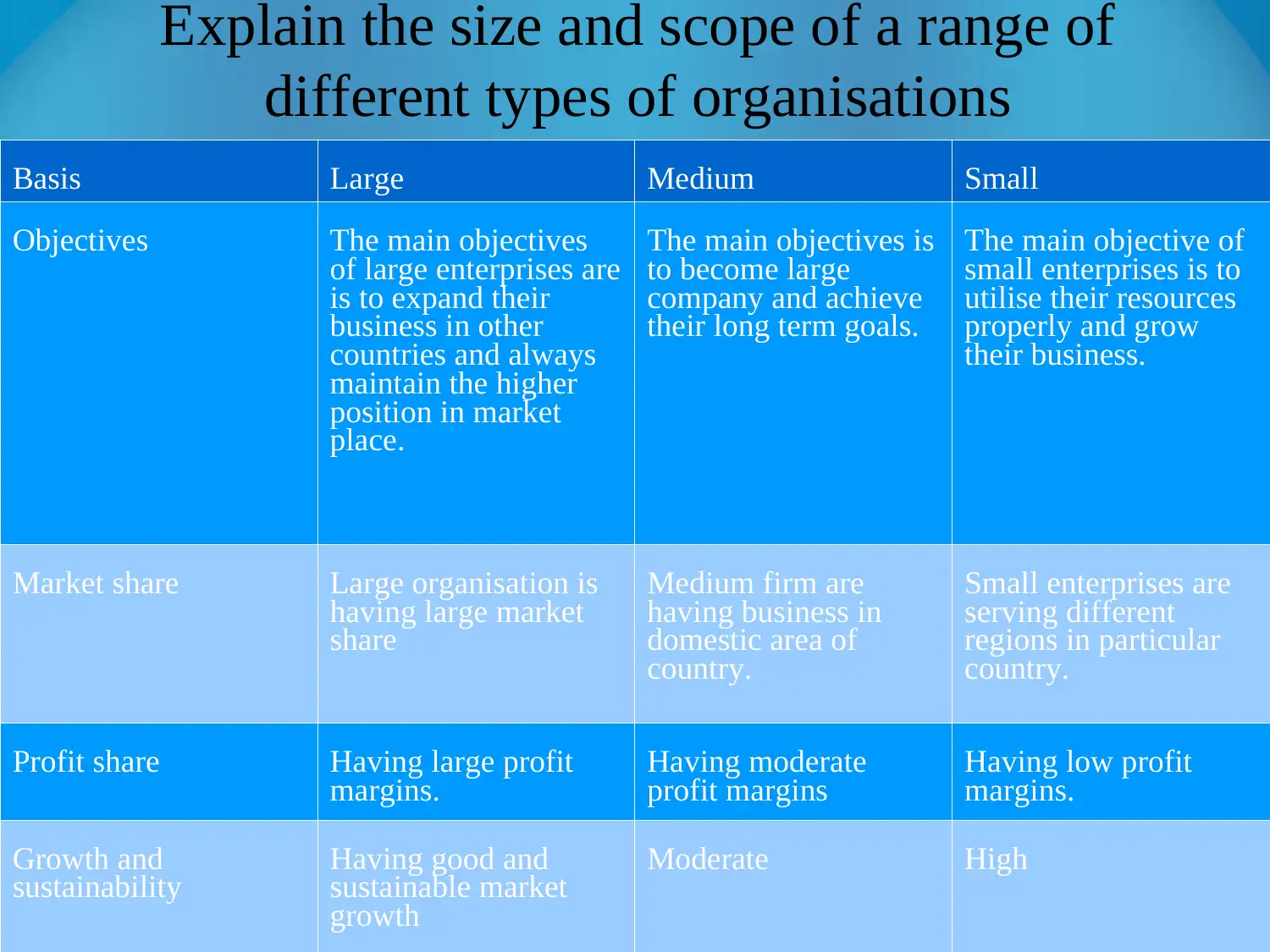
Explain the size and scope of a range of
different types of organisations
Basis Large Medium Small
Objectives The main objectives
of large enterprises are
is to expand their
business in other
countries and always
maintain the higher
position in market
place.
The main objectives is
to become large
company and achieve
their long term goals.
The main objective of
small enterprises is to
utilise their resources
properly and grow
their business.
Market share Large organisation is
having large market
share
Medium firm are
having business in
domestic area of
country.
Small enterprises are
serving different
regions in particular
country.
Profit share Having large profit
margins. Having moderate
profit margins Having low profit
margins.
Growth and
sustainability Having good and
sustainable market
growth
Moderate High
different types of organisations
Basis Large Medium Small
Objectives The main objectives
of large enterprises are
is to expand their
business in other
countries and always
maintain the higher
position in market
place.
The main objectives is
to become large
company and achieve
their long term goals.
The main objective of
small enterprises is to
utilise their resources
properly and grow
their business.
Market share Large organisation is
having large market
share
Medium firm are
having business in
domestic area of
country.
Small enterprises are
serving different
regions in particular
country.
Profit share Having large profit
margins. Having moderate
profit margins Having low profit
margins.
Growth and
sustainability Having good and
sustainable market
growth
Moderate High
Paraphrase This Document
Need a fresh take? Get an instant paraphrase of this document with our AI Paraphraser
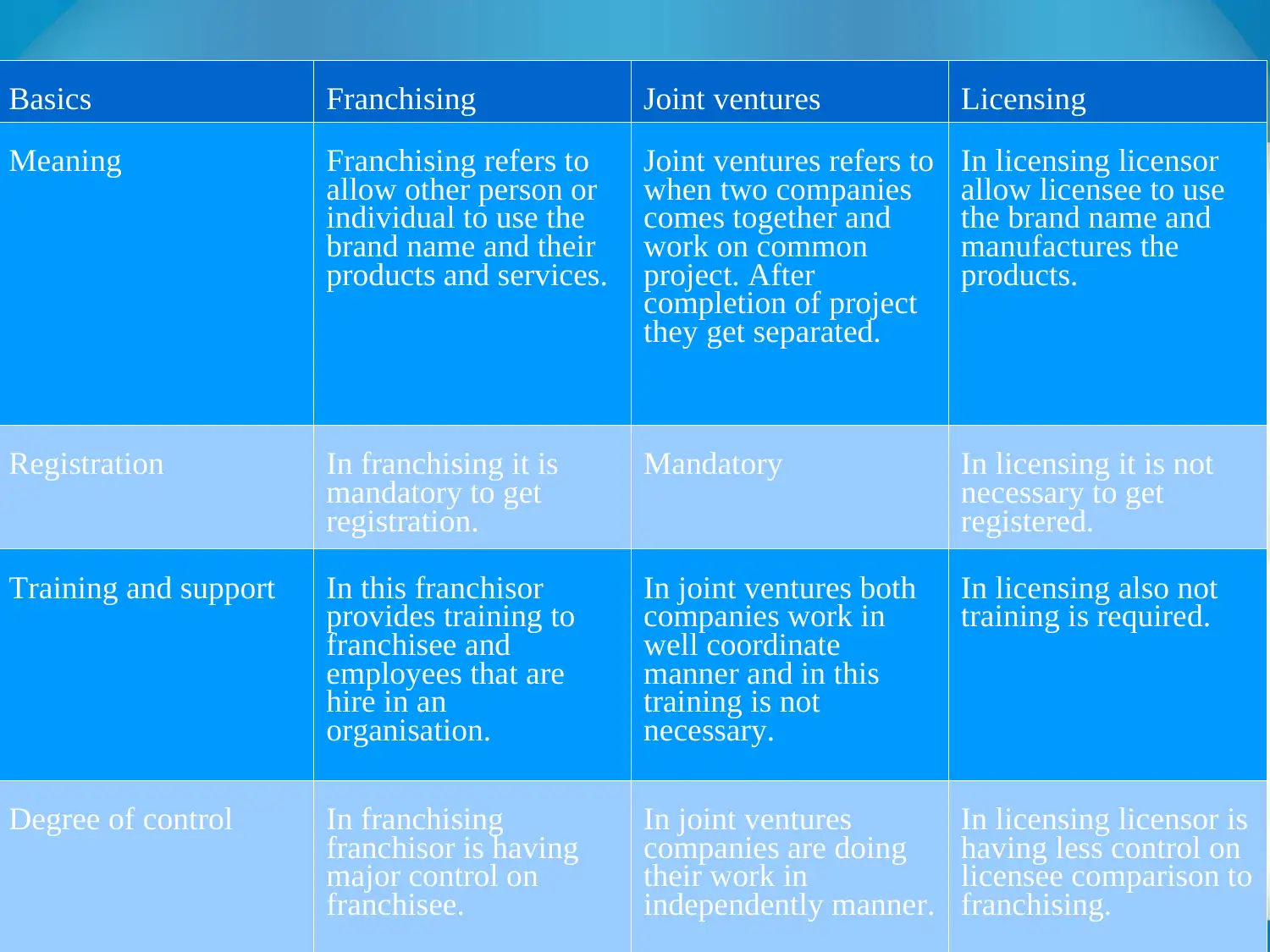
Basics Franchising Joint ventures Licensing
Meaning Franchising refers to
allow other person or
individual to use the
brand name and their
products and services.
Joint ventures refers to
when two companies
comes together and
work on common
project. After
completion of project
they get separated.
In licensing licensor
allow licensee to use
the brand name and
manufactures the
products.
Registration In franchising it is
mandatory to get
registration.
Mandatory In licensing it is not
necessary to get
registered.
Training and support In this franchisor
provides training to
franchisee and
employees that are
hire in an
organisation.
In joint ventures both
companies work in
well coordinate
manner and in this
training is not
necessary.
In licensing also not
training is required.
Degree of control In franchising
franchisor is having
major control on
franchisee.
In joint ventures
companies are doing
their work in
independently manner.
In licensing licensor is
having less control on
licensee comparison to
franchising.
Meaning Franchising refers to
allow other person or
individual to use the
brand name and their
products and services.
Joint ventures refers to
when two companies
comes together and
work on common
project. After
completion of project
they get separated.
In licensing licensor
allow licensee to use
the brand name and
manufactures the
products.
Registration In franchising it is
mandatory to get
registration.
Mandatory In licensing it is not
necessary to get
registered.
Training and support In this franchisor
provides training to
franchisee and
employees that are
hire in an
organisation.
In joint ventures both
companies work in
well coordinate
manner and in this
training is not
necessary.
In licensing also not
training is required.
Degree of control In franchising
franchisor is having
major control on
franchisee.
In joint ventures
companies are doing
their work in
independently manner.
In licensing licensor is
having less control on
licensee comparison to
franchising.

CONCLUSION
There are different kind of organization like public, private
and voluntary. These enterprise have different operation
which each other. The legal rules and regulation is also
different. Their purpose of running business is differ from
each other. Every firm have their own way to enter in
new market. There are various ways by which firm can
enter in new market such as franchising, joint ventures
and licensing. Business unit need to choose more
appropriate way to get success.
There are different kind of organization like public, private
and voluntary. These enterprise have different operation
which each other. The legal rules and regulation is also
different. Their purpose of running business is differ from
each other. Every firm have their own way to enter in
new market. There are various ways by which firm can
enter in new market such as franchising, joint ventures
and licensing. Business unit need to choose more
appropriate way to get success.
⊘ This is a preview!⊘
Do you want full access?
Subscribe today to unlock all pages.

Trusted by 1+ million students worldwide

REFERENCES
Baraya, A.R., Budden, M.C. and Escobar, L.M., 2011.
Strategically Enhancing Business Capabilities And
Social Development In The Hispanic Community.
Journal of Business & Economics Research (JBER).
6(6).
Chavis, L.W., Klapper, L.F. and Love, I., 2011. The impact
of the business environment on young firm financing.
The world bank economic review. 25(3). pp.486-507.
Commander, S. and Svejnar, J., 2011. Business environment,
exports, ownership, and firm performance. The Review
of Economics and Statistics. 93(1). pp.309-337.
Baraya, A.R., Budden, M.C. and Escobar, L.M., 2011.
Strategically Enhancing Business Capabilities And
Social Development In The Hispanic Community.
Journal of Business & Economics Research (JBER).
6(6).
Chavis, L.W., Klapper, L.F. and Love, I., 2011. The impact
of the business environment on young firm financing.
The world bank economic review. 25(3). pp.486-507.
Commander, S. and Svejnar, J., 2011. Business environment,
exports, ownership, and firm performance. The Review
of Economics and Statistics. 93(1). pp.309-337.
Paraphrase This Document
Need a fresh take? Get an instant paraphrase of this document with our AI Paraphraser

Thank You
1 out of 11
Related Documents
Your All-in-One AI-Powered Toolkit for Academic Success.
+13062052269
info@desklib.com
Available 24*7 on WhatsApp / Email
![[object Object]](/_next/static/media/star-bottom.7253800d.svg)
Unlock your academic potential
Copyright © 2020–2025 A2Z Services. All Rights Reserved. Developed and managed by ZUCOL.





